Explainer last updated April 24, 2020; see also Timeline entries tagged “Dissident Groups”
It is common for some ex-combatants to fall back into violence in transitions from war to peace. As Oliver Kaplan and Enzo Nussio observed in 2016, demobilized fighters worldwide have gone “recidivist” as participants in organized crime, petty crime, vigilantism, or new armed groups. In Colombia in 2014, the Fundación Ideas para la Paz estimated that 24 percent of the country’s population of demobilized paramilitary and guerrilla fighters up to that date had reverted to criminal or armed-group activity. (The figure includes both fighters who deserted individually, and paramilitaries who participated in a 2003-2006 collective demobilization process.)
The Revolutionary Armed Forces of Colombia (FARC), which signed a peace accord in 2016 and demobilized in 2017, is no exception. While 13,185 FARC members formally demobilized, perhaps 800 rejected the peace accord entirely and refused to participate in the process. Of those who went through the demobilization process, the Fundación Paz y Reconciliación estimated that, as of late 2019, approximately 830 had taken up arms again. If correct, this level of recidivism—about 6.4 percent of the total who demobilized, plus a similar number that refused to demobilize in the first place—is within the norm for post-conflict transitions.
These approximately 1,600 former FARC members who remain in arms, the Fundación asserted in January 2020, operate within 23 FARC “dissident” groups active in 85 of Colombia’s 1,103 counties (municipalities). To these must be added an unclear number of new recruits with no guerrilla background: perhaps 600 to 800, which would make for a total dissident membership of about 2,400 fighters scattered across these 23 groups, each of which range in size from a few dozen to a few hundred members.

“Dissidents” are also often referred to as “Reincident Organized Armed Groups” (GAOR in Spanish) or Post-FARC Armed Groups (GAPF in Spanish). While all profit from the drug trade and other illegal economies, they vary in the extent to which they identify as “FARC” or ex-FARC. The two largest networks maintain many of the symbols and slogans of the old guerrilla group, with iconography featuring the images of deceased FARC leaders. Others do little to disguise their criminal nature, their memberships may include people with paramilitary backgrounds, and they may benefit from relationships with corrupt security-force personnel.
The overwhelming majority of rank-and-file ex-guerrillas have remained within the demobilization process; as of January 2020 Colombia’s National Reincorporation Agency claimed to be unable to locate only 821 ex-guerrillas. Most low-ranking fighters have been occupied by starting families, availing themselves of educational opportunities, and involving themselves in farming or other legal money-making projects.
More at risk of recidivism are former mid-ranking FARC commanders: those who held high positions in fronts or were involved in financing the guerrillas’ operations via illicit economies. For many mid-level commanders, demobilization brought the temptation of profiting from their past networks in, or past control of, territories that are strategic for building illicit incomes, like drug trafficking routes and illegal mining sites.
Financing
Dissident groups’ illicit income streams differ little from those of other armed groups in Colombia. They are involved in the drug trade, particularly the purchase of coca leaf or coca paste from farmers, the production of cocaine, and sales to transnational criminal groups that move the product overseas. They encourage farmers to plant more coca or marijuana in some territories they control. Illicit precious metals mining is a principal income source. Dissident groups also collect extortion payments on much legal economic activity that takes place in areas they control. Some units appear to be more involved in illegal logging than the FARC were. While they make money from cross-border contraband smuggling, dissident groups’ presence in Venezuela, though significant, is most likely smaller than that of the National Liberation Army (ELN).
Drug trafficking, mainly cocaine, is almost certainly their largest income source. Dissident groups are active in most major coca-growing areas (Nariño, Putumayo, Catatumbo, Meta and Guaviare, Bajo Cauca) and at key transshipment points along coasts and borders. Like most other Colombian traffickers, they control few, if any, international smuggling routes into markets like the United States: they sell the product to other groups, like Mexican and Brazilian cartels, inside Colombia.

How the Dissidents Operate
It is impossible to generalize behaviors across groups that are very different. Dissident bands vary widely in the solidity of their command and control, their actual control of territory, and the extent to which they resemble armies more than gangs. The two principal national dissident organizations appear to obey a hierarchy at their highest levels, but it is not clear whether they truly command their far-flung component units, or whether it is more accurate to describe them as “aligned.”
In general, though, dissident groups tend to avoid open confrontations with the much stronger security forces. Ambushes and attacks on military or police personnel are infrequent. Dissident leaders whose actions attract too much attention from the security forces, like alias “Guacho” in Nariño discussed below, face a high probability of death or capture.
It is also uncommon for dissident groups to fight the ELN. FARC dissidents operating in ELN strongholds near the Venezuelan border, like Arauca and Catatumbo, appear to be honoring a sort of non-aggression pact with the guerrilla group, according to local analysts whom WOLA has interviewed since mid-2019. We have heard of similar behavior between ELN units and small FARC dissident groups in Chocó’s Atrato River basin. “None of the national dissident factions has solid accords with the ELN,” Colombia’s Fundación Ideas para la Paz found in January 2020, “though there are different types of relations between both armed groups.” These include non-aggression arrangements, or transitory operational alliances to confront paramilitaries.
Dissident groups do fight often with paramilitary groups, and with other dissidents. Several regions of Colombia suffer from territorial conflicts with more than two armed actors, usually for control of lucrative trafficking routes or illicit mining zones. In some cases, dissident groups have fragmented, and the component factions fight each other. Examples abound in the territorial discussions below.
Human Rights
All dissident groups have very poor human rights records. They routinely violate the personal integrity of civilian non-combatants. Though it is uncommon for them to commit attention-grabbing massacres—3 or more homicides at once—or ransom kidnappings, dissidents frequently carry out selective killings and so-called “social cleansing” operations targeting drug addicts, indigent people, prostitutes, or petty criminals. They are responsible for a significant portion of child recruitment, about a quarter of cases in a limited recent study carried out by the Observatory for the Protection of Rights and Welfare of Children (OPROB). Combat between dissidents, or between dissidents and paramilitary groups, often displaces communities, as happened to more than 2,300 people in Olaya Herrera, Nariño, in December 2019 and January 2020.
Dissident groups are frequent killers of demobilized FARC members, their former comrades. The Prosecutor General’s Office’s Special Investigative Unit, created by the peace accord, was able to attribute responsibility for 93 cases of ex-guerrillas murdered between 2017 and 2019; it blamed 36 of these, the largest single portion, on FARC dissident groups. Colombian security forces blame dissident groups for a wave of threats against inhabitants of a former FARC demobilization site (ETCR) in Ituango, Antioquia, and for an apparent plot to kill maximum FARC political party leader Rodrigo Londoño in January 2020. Leaders of the accused FARC faction deny involvement in that plot.
Dissident groups have drawn much attention for crimes against the environment. The group led by alias Gentil Duarte (see next section) stands accused of ejecting guards from national parks in southern Colombia, and tolerating or encouraging deforestation, cattle ranching, and cultivation of coca in parklands. This includes arrangements with large landholders: “Under Gentil Duarte there has been permissiveness toward large-scale property that didn’t exist under the previous FARC,” Colombian environmental researcher Estefanía Ciro observed in March 2020.

Principal Dissident Groups
A majority of FARC dissidents are loosely confederated into two national structures. In February 2020, Colombia’s Fundación Paz y Reconciliación estimated that, of 23 “post-FARC” groups in the country, 11 were grouped around the “First Front” or “Eastern Bloc” structure associated with Gentil Duarte, 4 were grouped around the “Second Marquetalia” structure associated with Iván Márquez, and the rest were independent, “dedicated to narcotrafficking,” and “in a process of decomposition.”
The extent to which component dissident groups are truly under the command of national structures is far from clear. Groups believed to be within one of the two national structures, however, rarely fight each other. While that may be changing, combat is far more frequent between the “independent” dissident groups and those aligned with the national structures.
First Front / Eastern Bloc
During much of its 52 years of armed existence, the FARC divided itself into seven geographic blocs around the country. The largest, the Eastern Bloc, operated in a vast region stretching from south of Bogotá across Colombia’s eastern plains to the Venezuelan border. In 2016, as negotiators in Havana were nearing agreement on a final accord, a few key units of the Eastern Bloc declared themselves dissident, rejecting the peace process. These centered on the FARC’s 1st Front (Armando Ríos Front), headed by Néstor Gregorio Vera Fernández alias Iván Mordisco, who declared his dissent in a June 2016 letter to the FARC’s negotiating team.
Iván Mordisco allied with Miguel Botache Santillana alias Gentil Duarte, who commanded the Eastern Bloc’s 7th Front. When Iván Mordisco went dissident in mid-2016, the FARC made Duarte, who had been a negotiator in Havana in 2015, the commander of the 1st Front and sent him to confront Mordisco. However, Mordisco convinced him to abandon the process, which he did months later, in late 2016, before demobilizations began. Their group, a confederation centered on Duarte, consolidated a presence in parts of the departments of Meta, Guaviare, Caquetá, and in sparsely inhabited wilderness regions further east and south to the Venezuelan and Brazilian borders. Today, Duarte tends to operate in Meta, the Eastern Bloc’s old rearguard; Mordisco, according to InsightCrime, operates in the far eastern plains of Guaviare, Vaupés, and Vichada; and Géner Medina alias Jhon 40, who was a key fixture in the FARC’s cocaine transshipment operations, is active in Vichada and along eastern border zones.

Today, Gentil Duarte is arguably Colombia’s most powerful dissident leader in terms of territorial control and number of fighters believed to be under his command. He has worked to align dissident groups into a new guerrilla structure, sending emissaries or small groups around the country, with some success near the Venezuela border in Arauca, Catatumbo, and elsewhere. His emissary to Catatumbo was reportedly Jhon 40.
The First Front / Eastern Bloc structure considers itself a continuation of the FARC’s fight: its statements espouse leftist politics, and its imagery is similar to that of the old FARC. It does not appear to have a detailed political program, though, or an ambition to take national power. In February 2020, a judge permitted preventive detention for six people whom prosecutors charge with committing acts of violence and vandalism, on behalf of Gentil Duarte and alias “Jerónimo” in Arauca, during Bogotá’s November 2019 political protests. If accurate, the allegations would be an uncommon example of behavior motivated more by politics than profit.
Second Marquetalia
Though larger, the First Front / Eastern Bloc is not the dissident network with the highest profile. The best-known national FARC dissident group was launched in late August 2019 by Iván Márquez, a former member of the FARC’s seven-person secretariat and the group’s chief negotiator during the full duration of the 2012-16 Havana peace dialogues. Márquez’s announcement of the formation of a new dissident group, flanked by several other top former FARC leaders in an August 29, 2019 video, sent a shock wave through the peace process.
To the extent that this group has a name, it appears to be referring to itself as the “Segunda Marquetalia,” a reference to the armed community of communist campesinos in southern Tolima department that became the FARC after undergoing a 1964 aerial attack by Colombia’s armed forces. In March 2020, Márquez published a book with the same title, about his journey back into clandestinity.
Luciano Marín Arango alias Iván Márquez was considered to be one of the more ideologically radical FARC leaders, and to have been a skeptic about peace talks: the FARC leadership most likely named him their chief negotiator in order to guarantee his buy-in. He entered the FARC in the 1970s; during a 1980s peace process, when the FARC formed a political party, the Patriotic Union (UP), Márquez served in Colombia’s Congress as a UP representative. He returned to arms in 1987 as that process disintegrated, and as elements of the military, paramilitary groups, drug traffickers, and the political right systematically assassinated thousands of UP members.
Before the negotiations, Márquez commanded the FARC’s Caribbean Bloc, operating in the north of the country and near the Venezuelan border. One of his closest confidants was Seuxis Pausías Hernández alias Jesús Santrich, a hardline ideologue who, apparently nearly blind, played more of a political than a military role in the organization. Santrich gained a reputation as an often difficult negotiator during the Havana peace talks.

In September 2017, after the FARC demobilized, it held a congress to found its new party. When the ex-guerrillas voted to select the party’s new leadership. Márquez received the largest number of votes, Santrich finished third, and maximum FARC leader Rodrigo Londoño alias Timoleón Jiménez finished fifth.
The peace accord guaranteed the FARC five seats in Colombia’s Senate and five seats in the House of Representatives for two terms starting in mid-2018. Iván Márquez was to become a senator, and Jesús Santrich was to become a congressman. But on April 9, 2018 Santrich was arrested and charged with conspiring to send cocaine to the United States. Led along by Iván Marquéz’s nephew, who was not a FARC member but is now in the United States as a witness, Santrich appears to have agreed to help arrange a 10-ton cocaine shipment in a meeting with Mexican traffickers who were in fact informants for the U.S. Drug Enforcement Administration (DEA). The events in question began in June 2017, after the peace accord’s ratification, so they are not subject to amnesty.

A U.S. court requested Santrich’s extradition, and the peace accords’ transitional justice tribunal, the Special Jurisdiction for Peace (JEP), began deliberations to verify whether the ex-negotiator’s alleged actions took place after the peace accord went into effect.
While top FARC leaders like Timoleón Jiménez called for calm, Iván Márquez responded by abandoning Bogotá, renouncing his Senate seat, and dropping out of view. Also dropping out of view was Hernán Darío Velásquez, alias “El Paisa,” the former commander of the FARC’s feared Teófilo Forero Mobile Column. This elite unit, tied to the FARC’s Southern Bloc, carried out many of the FARC’s most spectacular terrorist attacks and kidnappings.
Márquez and “El Paisa” abandoned the reincorporation site where they had been staying in Caquetá on July 3, 2018, claiming a plot was underway to arrest them. They headed east, to an area near (or perhaps over) the Venezuelan border. From hiding, Márquez began issuing very strong criticisms of the peace accord’s implementation, especially after conservative President Ivan Duque was inaugurated in August 2018. He also lashed out at the FARC party leadership in Bogotá. For more than a year, though, his status within the peace process remained unclear.
In May 2019 the JEP, unable to secure evidence from the U.S. Justice Department, ruled that it could not determine whether Santrich had committed a crime after the peace accord. Santrich was eventually released from prison and sworn into his congressional seat. By the end of June 2019, though, Santrich too had slipped away from his bodyguards and disappeared from view.
Márquez, Santrich, and “El Paisa” would appear in the August 29 video along with a handful of other FARC leaders and fighters. Of the rest, the most recognizable was Henry Castellanos alias Romaña, a former top Eastern Bloc commander who was known for carrying out ransom kidnappings on a massive scale in the region just south of Bogotá.
The video was a leading international news story. However, observers noted that it showed only a small number of fighters. In subsequent months, Colombia saw few if any signs of military or terrorist actions committed by Márquez’s group. Though Márquez’s and Santrich’s 2017 vote result indicated their popularity within the former FARC, their call to rebellion does not appear to have attracted many demobilized fighters. Instead, the Second Marquetalia appears focused on forging alliances with existing dissident groups.
In mid-July 2018, after they first disappeared, Márquez and “El Paisa” met with Gentil Duarte, leader of the First Front / Eastern Bloc dissidence, in the Yarí plains of Meta department. Márquez’s book praises Duarte as “a good, revolutionary man,” adding that Duarte helped him and “El Paisa” to avoid being captured by the government. However, there is no alliance between Márquez’s group and Duarte’s. “Everything indicates that Márquez’s rearmament announcement didn’t strengthen the dissident groups, it divided them,” wrote the Fundación Paz y Reconciliación’s Ariel Ávila in January 2020.
In the group’s inaugural video, Márquez makes overtures to the ELN. The Fundación Ideas para la Paz noted in January 2020 that there appears to be cordiality but no alliance between the dissidents and the guerrillas:
Media, citing intelligence sources, have informed about meetings between high-ranking ELN commanders and Iván Márquez (accompanied by “El Paisa” and “Jhon 40” [of the First Front / Eastern Bloc]) in Venezuela, to explore a possible alliance. For the moment, beyond a communique from one of the ELN’s fronts saluting the dissidents’ announcement, there are no signals that an accord is advancing. The historical relationship between [the FARC and ELN] has been marked by tensions, intense confrontations for territorial control, and mutual distrust.
On January 12, 2020, the director of Colombia’s National Police alleged that the “New Marquetalia” group—specifically “El Paisa”—was behind a foiled plot to assassinate Rodrigo Londoño, the leader of the FARC party. Romaña and Santrich both denied the group’s involvement or interest in killing Londoño.
Selected Territories
These two national dissident networks are establishing presences, or linking up with existing dissident groups, in several regions of the country. There, they often violently dispute territorial control with paramilitary groups or other “independent” dissident groups.
Nariño
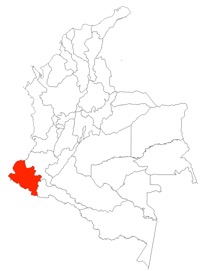
The first large dissident groups to emerge in Nariño, in 2017, were the Oliver Sinisterra Front (FOS) and the United Guerrillas of the Pacific (GUP). Throughout 2017 and 2018, parts of Nariño suffered fighting between the two bands. The FOS was headed by Walter Arizala alias “Guacho,” an Ecuadorian citizen who had joined the FARC in 2007 and become deeply involved in its cocaine transshipment activities. The GUP’s leader, Víctor David Segura alias “David,” took over after the FARC, in its final days, killed his brother, the group’s founder, known as “Don Y.”
In 2017 and early 2018, “Guacho” attracted national attention, and much pursuit by the security forces, by carrying out high-profile attacks on military targets, especially on the Ecuadorian side of the border. In March 2018 his men kidnapped, and later killed, two journalists and their driver from one of Quito’s principal newspapers, in what would turn out to be a major issue in Colombia’s relations with Ecuador. Their high profiles drew intense attention from Colombia’s security forces, who killed David in September 2018 and Guacho in December 2018.
The FOS and the GUP continue to exist, and to fight, though they are at least partially observing non-aggression pacts. But the picture has grown still more complicated in Nariño.
Sometime in late 2019, a large portion of the FOS split off and formed a new group, the Alfonso Cano Western Bloc, headed by alias “Allende” and apparently linked to Iván Márquez and “El Paisa’s” Second Marquetalia network. A dissident unit linked to Gentil Duarte, the 30th Front, has meanwhile been arriving since mid-2019 from its rearguard zone in Cauca and Valle del Cauca to the north. The Alfonso Cano and the 30th, whose areas of operation overlap little, do not appear to be fighting, and both appear to be endeavoring—with little success in Nariño so far—to unite the fragmented dissident groups.
Both are contesting territory with the FOS (now headed by alias “Gringo”), the GUP, and a paramilitary organization called Los Contadores that is linked to the FOS. The Contadores’ commander was captured in February. Another, smaller Nariño group made up of former FARC members that dates back to 2017, the Gente del Orden, appears now to be tied to the Alfonso Cano structure, according to analyst Kyle Johnson, who met with dissident leaders in late 2019.
Cauca
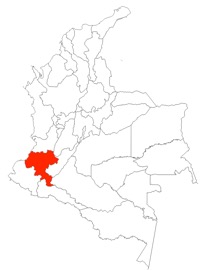
Northern Cauca, a conflictive area with a large and well-organized indigenous population, is under heavy influence of two dissident groups, both descended from elements of the FARC’s 6th Front that rejected the peace accord before it was signed. The Jaime Martínez Mobile Column, headed by Leider Johani Noscue alias “Mayimbú,” and the Dagoberto Ramos Mobile Column, headed by Fernando Israel Méndez Quitumbo, alias “El Indio,” share territorial control, possibly calling themselves the Joint Western Command New Sixth Front.
It is not clear whether one of these two columns is dominant over the other, though “Mayimbú” has a higher profile. InsightCrime describes their relationship as a “non-aggression pact” more than a confederation. They “may have a direct relationship” with, or “respond to” the command of, the First Front / Eastern Bloc dissident network headed by Gentil Duarte, depending on the source.
The two groups have come to dominate the cannabis trade in several northern Cauca municipalities, and much cocaine transshipment via the Naya River valley region. They appear to have fought off a splinter of the Popular Liberation Army (EPL), a remnant of a guerrilla group that demobilized in 1990 yet remained active across the country in the Catatumbo region.
These structures are responsible for massacres and killings of social and political leaders in northern Cauca, including the September 2019 ambush and murder of mayoral candidate Karina García in Suárez municipality. This act has made “Mayimbú”—who was captured in 2014 but released when he demobilized in 2017— a top target of Colombia’s security forces.
Further south in Cauca, in the cocaine producing region around Argelia, is the Carlos Patiño Column, also known as the 30th Front, a dissident group headed by alias “El Mocho,” also active in Nariño, that may be allied with the First Front / Eastern Bloc network. This group has been fighting the ELN for control of trafficking routes to the Pacific. It may also maintain disagreements with the 6th Front group headed by “Mayimbú.” Several social leaders have been murdered in the vicinity of Argelia since 2019.
Military and FARC sources told La Silla Vacía that, in December 2019, Iván Márquez of the Second Marquetalia national dissident network sent an emissary to northern Cauca to seek an alliance with “Mayimbú” and the 6th Front dissidents. This emissary was apparently rebuffed, as they maintain some relationship with the First Front / Eastern Bloc.
Fighting between dissidents and other armed groups has fallen very hard on Cauca’s indigenous, Afro-descendant, campesino, and other social leaders, who tend to be very well organized and resistant to criminal domination in this part of Colombia. As disputes worsen, the frequency of threats and murders is likely to increase further.
Putumayo
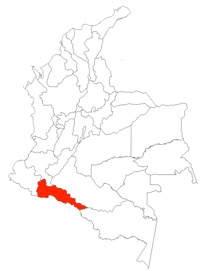
Dissidents from the 48th, linked to the First Front / Eastern Bloc network, are operating as the Carolina Ramírez Front. They are fighting a local criminal group known variously as the Mafia, the Sinaloa Mafia, or the “Constru,” which can trace its lineage to paramilitary groups but has recruited a significant number of former FARC fighters, especially from the 32nd Front.
Some of the main victims of the violence have been Putumayo’s social leaders, particularly those involved in coca substitution programs under the peace accord’s fourth chapter. The Bogotá think tank INDEPAZ counted 10 murders of social leaders in Putumayo between January and April 2020. Two, Gloria Ocampo and Marco Rivadeneira, were widely known in Colombia’s national peace and human rights movements.
Antioquia
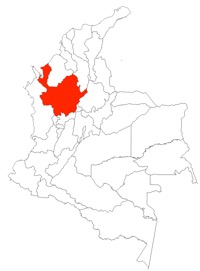
The two groups’ territories overlap significantly, though the 18th appears to be more active in the northwest of Antioquia, around the municipality of Ituango, and the 36th appears to be more active in the northeast, in Antioquia’s Bajo Cauca region. Both areas are hotly contested centers of cocaine production and transshipment.
The Bajo Cauca region, together with the adjoining southern part of Córdoba department, is one of Colombia’s most violent zones. It is contested between at least four groups: the 36th Front dissidents; the Gulf Clan national paramilitary network; the Caparros, a local paramilitary splinter group; and the ELN.
Gentil Duarte’s First Front / Eastern Bloc network does not appear to have a presence in Antioquia.
Arauca and Catatumbo
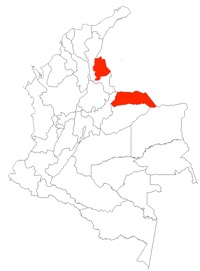
In Arauca, the Martín Villa 10th Front is under the command of alias “Jerónimo.” It is considered part of the First Front / Eastern Bloc structure headed by Gentil Duarte. In late 2019, reports indicated that a faction of “Jerónimo’s” group, headed by alias “Porrón,” may have split off and allied itself with Iván Márquez’s Second Marquetalia network. This schism may have involved fighting on the Venezuelan side of the border. If accurate, this would be a rare example (so far) of fighting between groups aligned with the two national dissident networks.
In 2018 Duarte reportedly sent top leader “Jhon 40” as an emissary to Catatumbo, where some former fighters from the FARC’s 33rd Front had formed a dissident presence. This attempt was unsuccessful, La Silla Vacía explains, “mainly because the dissidents in that zone had already closed agreements with [Mexico’s] Sinaloa Cartel, and Duarte wanted them to do business with Brazilian cartels, which buy much of the coca that is produced in the country’s south.” The same article points out that a former mid-level FARC commander from Catatumbo, Enrique Muñoz, appears in Iván Márquez’s August 2019 video inaugurating the Second Marquetalia group.
